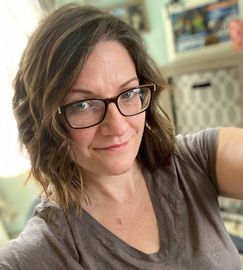- About Us
- Advertise / Support
- Editorial Board
- Contact Us
- CancerNetwork.com
- TargetedOnc.com
- OncLive.com
- OncNursingNews.com
- Terms & Conditions
- Privacy
- Do Not Sell My Information
- Washington My Health My Data
© 2025 MJH Life Sciences™ and CURE - Oncology & Cancer News for Patients & Caregivers. All rights reserved.
Ovarian Cancer Drug Offers Patients Hope - and a Longer Life

In a new study, Zejula (niraparib) has been shown to prolong life for patients with ovarian cancer who have already undergone four or more rounds of chemotherapy.
Ovarian cancer is the deadliest gynecologic cancer in the US, with 70% of patients relapsing after first responding to initial treatment. However, heavily pretreated patients with this disease may have a new treatment option to extend their lives, according to the results of a recent study published in The Lancet Oncology.
Zejula (niraparib), is a PARP inhibitor that can prevent cancer cells from repairing their damaged DNA, and it may extend the lives of women with ovarian cancer who have undergone four or more rounds of chemotherapy, says gynecologic oncologist and lead author of the QUADRA study, Kathleen Moore, M.D.
This patient population typically sees a median survival rate of five to nine months after the third line of therapy, and the few treatment options beyond that seeing a response rate of less than 10%. But PARP inhibitors like Zejula have shown promise in promoting cell death, particularly in individuals with BRCA-related disease, as these cancer cells already have difficulty repairing their DNA.
In an interview with CURE, Moore explained that this study looked at how Zejula performed in this patient population, regardless of BRCA status, in an effort to find new options.
“We wanted to study the efficacy of PARP inhibitors (PARPi) — in this case niraparib – in women who had been relatively heavily pretreated with at least three lines of therapy, and regardless of biomarker status, to get a signal of how clinically important PARPi could be among a broader population than had been tested in the past,” Moore said.
The single-arm, phase 2 study enrolled 463 patients from the US and Canada between April 2015 and November 2017. All were women with epithelial ovarian, fallopian tube, or primary peritoneal cancer who had been treated with three or more previous chemotherapy regimens. The primary endpoint was to evaluate the overall response rate, and by the time the study database was locked in April 2018, 21 patients were still on treatment. The median follow-up for overall survival was 12.2 months.
Of the total patient population, 151 were platinum-resistant and 161 were refractory. The most common treatment-related side effects were small intestinal obstruction (in 7% of patients), thrombocytopenia (in 7% of patients) and vomiting (in 6% of patients). One treatment-related death due to gastric hemorrhage was reported.
At follow up, researchers found that 27% of women responded well to niraparib, and the median duration of response was 9.2 months. Overall survival for all participants was more than 20 months, which is surprising for a late line of therapy, according to Moore.
"We don't normally see response rates of more than 10% in women who have had four, five and six chemotherapy treatments," she said in a press release about the study. "So, a 27% response, especially given that these were not all women with BRCA mutations, was a nice signal that these patients can still benefit from PARP inhibitor use."
Moore also noted that patients’ biomarker status was noted in the study as well, and the results in both patient groups were promising.
“Patients with BRCA mutations were enrolled on the study, and, as in other PARPi trials, demonstrated a clinically relevant overall response,” she told CURE. “But we saw responses in 27% of those patients who were HRD-positive and platinum-sensitive, importantly telling us that PARPi use benefits patients beyond BRCA.”
And in patients who were resistant to their last line of chemotherapy treatment, 33% of women saw at least four additional months of survival. While it may not seem like much, Moore said, every month counts.
“They are never enough, but several months of disease stabilization is better than none,” Moore explained in a press release. “They can get people to Christmas or to see a new grandchild or to another milestone. Then, if they are stabilized and feeling better, they might be able to take another drug or go on a clinical trial.”
With this study, Moore and her team hope these findings will lead to a new Food and Drug Administration indication for niraparib in late line, HRD-positive, platinum-sensitive patients, with and without a BRCA mutation.
Related Content:



